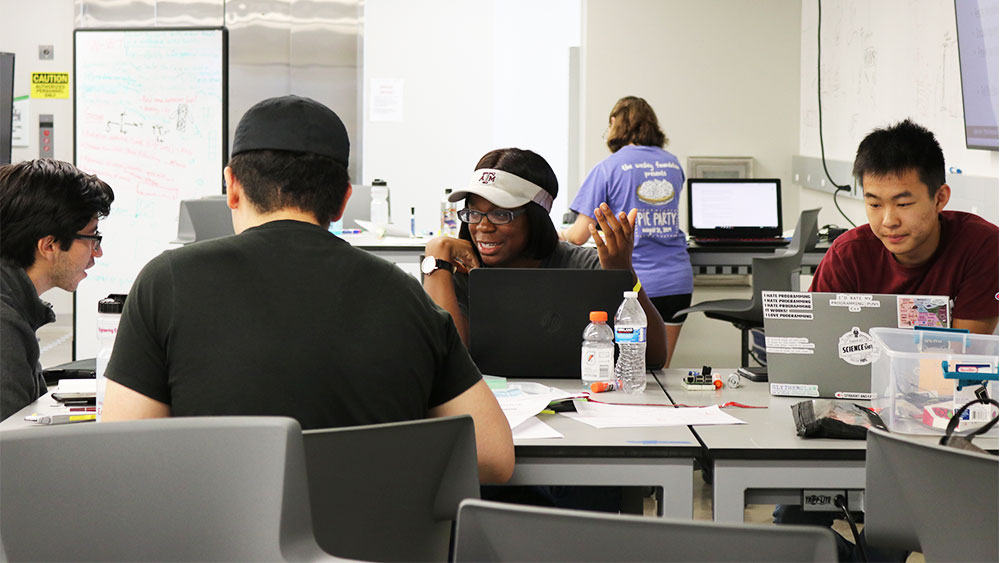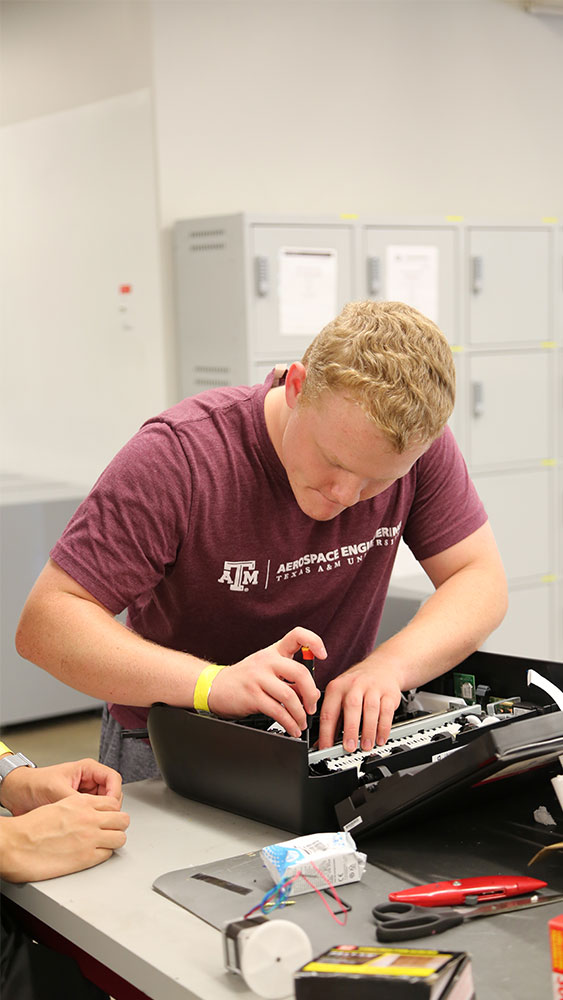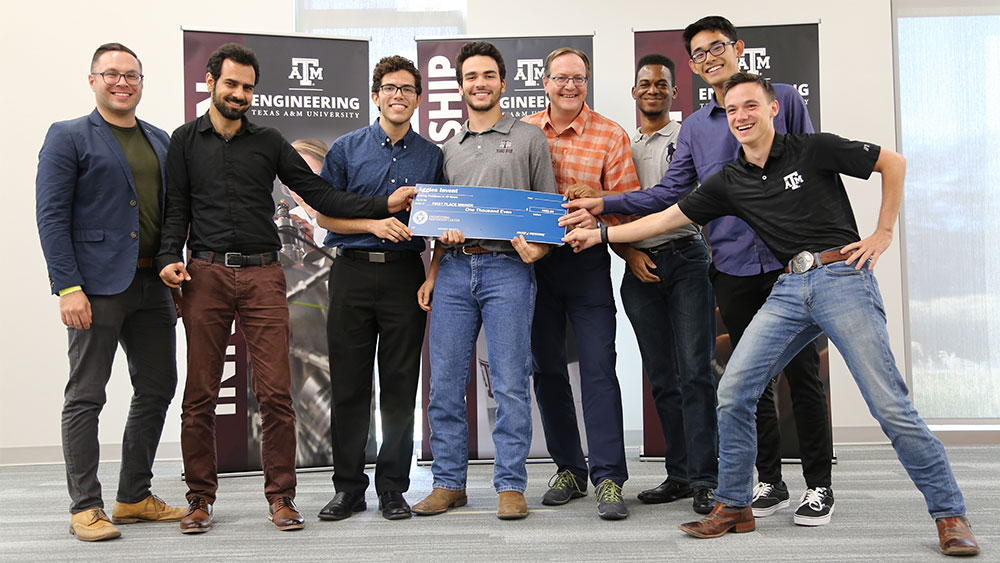
Just 48 hours is all the time 55 students had to compete in the first Aggies Invent competition of the new academic year. The challenge? Nuclear security.
In a first of its kind partnership, Los Alamos National Laboratory (LANL) sponsored the event to prepare the nation for a rapidly evolving technological and geopolitical environment that will demand much more technical capability, combined with a more rapid and innovative response.
Lloyd Brown, guest scientist with LANL, formerly taught as a professor at the United States Naval Academy and enjoys helping the students bring the theories and knowledge gained through their studies full circle to the real world.
“A lot of students just don’t see why they’re learning this stuff from the classroom,” Brown said. “They can’t see the application. So, this is where the rubber meets the road.”

Brown was on the team from LANL that put together the list of 14 needs statements students could choose from to work on over the weekend. When a team hit a road block, he talked the students through the situation at hand and helped them to simplify the problem they were facing.
“I try to stress to them that this is just a thermodynamics problem and to step back, think about it and realize the work they were doing in the classroom or the reason they did that homework was to prepare them for something like this,” Brown said.
For Athena Sagadevan, doctoral student in nuclear engineering, the competition offered an opportunity to further delve into her passion for nuclear security while working with other students from various backgrounds.
“I’ve never worked with a multidisciplinary team before, so my team members all bring extremely different perspectives that I have not seen through my years of studying,” Sagadevan said.
Don Quintana, division leader for weapons systems engineering at LANL, described the topics presented to students as some of the most complex and challenging things the lab is working on.
“Those topics are things we have been working on for many years, some even 20-30 years,” Quintana said. “We brought them forward in an unclassified form so the students could give them their best shot with new sets of eyes while encouraging them to think outside of the box.”
Liam Fortier, sophomore nuclear engineering major, chose to tackle the design of a shield for a space shuttle or missile to prevent the object from burning up upon re-entry into Earth’s atmosphere.
“This is a pretty dynamic problem that doesn’t have a simple fix as of right now,” Fortier said. “For this, there are all kinds of variables you have to take into account, such as different materials with aerodynamics stuff going on and heat transfer. It also has a lot of application commercially.”

The winning team, Rock-E, chose to address how countries can detect materials used in weapons of mass destruction and help prevent conflict between weaponized countries. The team included David Gregorio, electrical engineering senior; Carter Radocha, general engineering freshman; Benjamin Fenuyi, mechanical engineering sophomore; Brady Trieu, general engineering freshman; Leonardo Escamilla, general engineering freshman; and Amir Rad, aerospace engineering.
“In order to be prepared for nuclear threats, you need to know where they are coming from,” said Fenuyi. “Thus, you need a device that detects nuclear materials before they become dangerous.”
Should the threat of a nuclear war arise, it is essential that countries be able predict when an enemy is preparing to drop such a bomb.
“Nations around the world are reaching their era of nuclear weaponry with nearly 2,000 nuclear tests performed since the bombing of Hiroshima and Nagasaki,” Fenuyi said.
Cue Rock-E, the team’s answer to the challenge at hand, and the reason the judges awarded them the $1,000 first-place prize. Rock-E is a compact module that can be adapted to any environment. However, this is no ordinary module. The team’s concept has the ability to be deployed in teams of one to five to detect any chemical, biological or nuclear agent.
“Rock-E can also be used as a safety device to detect any chemical or radiation levels in real time,” said Gregorio. “Combined with an alarm, it can provide workers in high-risk areas with crucial information before disaster strikes.”
The lightweight design allows a single drone to carry up to a full team of five modules in whatever way best suits the terrain, allowing for versatility in any situation.
“The management of LANL has allowed us to explore ways of leveraging both the creativity or our students and their innovative mindsets, and the deep understanding of the fundamental technology of LANL,” said Rodney Boehm, director of Engineering Entrepreneurship. “It’s simply phenomenal and very humbling to be a part of. We look forward to next year’s Aggies Invent – Nuclear Security being even more impressive.”